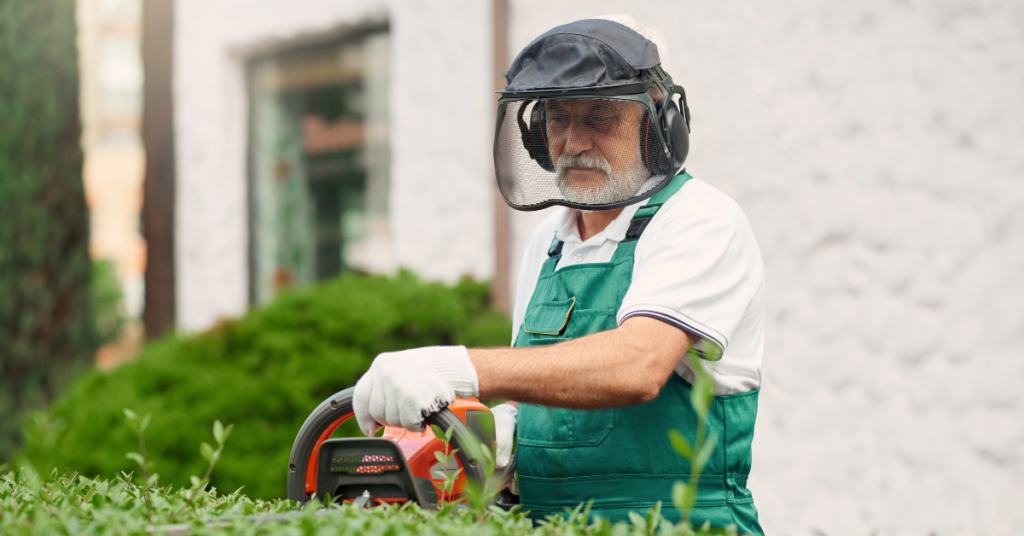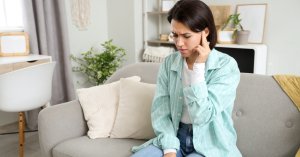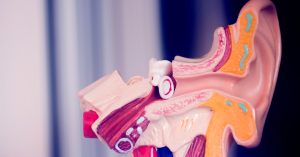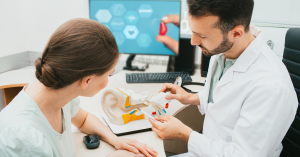Noise-induced hearing loss (NIHL) is one of the most common yet preventable types of hearing damage affecting millions of people worldwide. It occurs when the delicate structures in the inner ear are exposed to sounds that are too loud or prolonged over time. While many assume hearing loss is a natural part of aging, a significant portion of hearing decline—especially among older adults—is directly related to excessive noise exposure throughout a lifetime.
From noisy workplaces and loud concerts to everyday activities like mowing the lawn or using earbuds at high volumes, we are constantly surrounded by potentially harmful sounds. Unfortunately, because hearing loss often develops gradually, many people don’t recognize the damage until it has already become permanent.
This article will guide you through everything you need to know about noise-induced hearing loss. We’ll explain how it happens, the environments and behaviors that increase your risk, and how to spot the early warning signs. Most importantly, we’ll provide proven prevention strategies and explore recovery options to help you protect your hearing and maintain a high quality of life, no matter your age.
What Is Noise-Induced Hearing Loss?
Noise-induced hearing loss (NIHL) is a form of sensorineural hearing damage caused by exposure to harmful levels of sound. Unlike age-related hearing loss, which occurs gradually due to aging, NIHL can happen suddenly or develop over time depending on the intensity and duration of noise exposure. The root cause lies in the damage to the tiny hair cells (stereocilia) within the cochlea, a part of the inner ear responsible for transmitting sound signals to the brain. Once these cells are damaged or destroyed, they do not regenerate, making the hearing loss permanent.
NIHL can result from a single, extremely loud noise such as an explosion or gunshot, or from repeated exposure to moderately loud sounds like construction equipment, lawnmowers, or loud music through headphones. Everyday activities that seem harmless—like attending sporting events, using power tools, or even driving with the windows down on a highway—can contribute to cumulative hearing damage over time.
The threshold for potentially damaging sound is generally considered to be 85 decibels (dB), roughly equivalent to the sound of heavy traffic. The louder the noise, the less time it takes for damage to occur. For example, a rock concert can reach 110–120 dB, which can cause damage in under 15 minutes without ear protection.
It’s also important to note that noise-induced hearing loss can affect people of all ages, but older adults are particularly vulnerable due to existing age-related hearing decline. When combined, these factors can significantly impact communication, cognitive function, and overall wellbeing. Recognizing NIHL as a distinct and preventable type of hearing damage is the first step toward taking proactive measures to preserve your hearing health.
Common Causes and Risk Factors
Noise-induced hearing loss (NIHL) doesn’t happen in a vacuum. It’s the result of repeated or intense sound exposure that damages the delicate structures of the inner ear. Understanding the most common causes and contributing risk factors can help you take steps to avoid this preventable condition.
Occupational Noise Exposure
For many adults, especially those over 50, long-term exposure to loud noise in the workplace is one of the leading causes of NIHL. Jobs in construction, manufacturing, agriculture, transportation, and the military often involve persistent exposure to high decibel levels. In many cases, these environments exceed safe sound thresholds without adequate hearing protection being provided or used. Repeated exposure over years, even to what might seem like background noise, can cause permanent damage.
Recreational Activities
Modern lifestyles include numerous recreational noise hazards. Concerts, sporting events, fireworks displays, and even home hobbies like woodworking or motorcycling can easily reach volumes harmful to your ears. Using personal audio devices with earbuds or headphones at high volumes is another increasingly common contributor, particularly with the rise of streaming and portable entertainment.
Environmental Noise Pollution
Noise pollution in everyday environments is an often-overlooked risk factor. Busy urban areas, public transportation systems, sirens, and traffic can all contribute to gradual hearing damage. Even something as simple as using a hairdryer or blender daily at close range may add up over time if hearing protection isn’t considered.
Individual Risk Factors
While anyone can develop NIHL, some individuals may be more susceptible due to:
- Age: Older adults may already have some degree of age-related hearing loss, making them more vulnerable to additional noise damage.
- Genetics: Some people have a genetic predisposition to hearing loss, which can be worsened by noise exposure.
- Health conditions: Diabetes, cardiovascular disease, and certain medications can increase the ear’s sensitivity to noise damage.
- Lifestyle habits: Smoking and poor circulation can also negatively impact ear health.
Recognizing these risks allows for better decision-making when it comes to protecting your hearing. Whether you’re at work, enjoying your favorite pastime, or just navigating daily life, awareness is your first line of defense.
Symptoms and Early Warning Signs
Noise-induced hearing loss (NIHL) often develops gradually, making it easy to overlook in its early stages. Because the damage typically affects the high-frequency sounds first, many people don’t realize their hearing is compromised until it starts interfering with daily communication and quality of life. Being able to recognize the early warning signs is crucial to catching and managing NIHL before it worsens.
Muffled or Distorted Hearing
One of the most common early symptoms is the perception that sounds are muffled or less sharp. Conversations may seem less clear, especially when there’s background noise. You might find yourself asking people to repeat themselves more frequently, especially if they’re speaking softly or quickly.
Tinnitus (Ringing in the Ears)
Tinnitus—a ringing, buzzing, hissing, or roaring sound in one or both ears—is often one of the first indicators of hearing damage from noise exposure. It can be intermittent or constant and may worsen in quiet environments or at bedtime. Although tinnitus doesn’t always mean you have NIHL, it is strongly associated with damage to the inner ear.
Difficulty Understanding Speech
As high-frequency hearing diminishes, distinguishing certain consonant sounds (like “s,” “th,” or “f”) becomes more challenging. This makes speech sound unclear, especially in group settings or noisy environments like restaurants or family gatherings. If you feel people are mumbling more than they used to, it could actually be your hearing changing—not the way they speak.
Increased Sensitivity to Loud Sounds
Paradoxically, individuals with NIHL might also experience recruitment, a condition where moderately loud sounds feel uncomfortably loud or even painful. This heightened sensitivity to sound often coexists with diminished hearing, making it difficult to find comfortable listening levels.
Social Withdrawal or Fatigue
Struggling to hear and follow conversations can lead to frustration, embarrassment, and eventually social withdrawal. You may avoid gatherings or feel mentally exhausted after conversations. This “listening fatigue” is a lesser-known but important sign that your hearing could be compromised.
Sudden Hearing Loss Events
Though most NIHL develops gradually, a single exposure to an extremely loud noise—like a gunshot or explosion—can cause immediate and sometimes profound hearing loss. In such cases, a sudden drop in hearing, especially accompanied by ear pain or tinnitus, should be treated as a medical emergency.
Early detection is key to managing NIHL. If you recognize any of these symptoms, scheduling a professional hearing evaluation is a proactive step toward protecting and possibly preserving your remaining hearing.
How to Prevent Noise-Induced Hearing Loss
The good news about noise-induced hearing loss (NIHL) is that it’s entirely preventable. By understanding the risks and adopting smart listening habits, you can protect your hearing and avoid the cumulative damage that often goes unnoticed until it’s too late. Prevention is especially important for older adults who may already be dealing with age-related hearing changes.
Use Hearing Protection Devices
One of the most effective ways to prevent NIHL is to wear hearing protection in loud environments. Foam earplugs, earmuffs, or custom-molded earplugs can significantly reduce the volume of harmful sounds. They’re especially important when using power tools, attending concerts, or working in noisy settings. For musicians or frequent concertgoers, high-fidelity earplugs preserve sound quality while reducing volume.
Follow the 60/60 Rule
When using headphones or earbuds, follow the “60/60 rule”: listen at no more than 60% of maximum volume for no longer than 60 minutes at a time. Also, consider investing in noise-canceling headphones, which block out background noise and allow you to listen at lower, safer volumes.
Be Aware of Noise Levels
Familiarize yourself with decibel levels and how long it takes for exposure to cause damage. Sound levels over 85 dB (like heavy traffic or a busy restaurant) can cause hearing loss over time, while sounds above 100 dB (like lawnmowers, concerts, or chainsaws) can cause damage in minutes. Smartphone apps are available to help monitor environmental noise levels in real time.
Limit Time in Loud Environments
Even if you’re wearing hearing protection, limiting your time around loud noise helps reduce risk. Take breaks in quieter areas when attending loud events, and try to avoid sitting or standing directly next to loudspeakers or machinery.
Maintain Good Ear Health
General health plays a role in hearing preservation. Keeping blood pressure, blood sugar, and cholesterol in check can support better circulation to the inner ear. Avoid smoking, stay hydrated, and practice regular exercise—all of which contribute to ear health.
Schedule Regular Hearing Tests
Especially for adults over 50, regular hearing checkups are as important as eye exams or dental cleanings. Hearing evaluations help catch changes early and provide a baseline for monitoring hearing health over time. Early detection allows for timely intervention and can slow the progression of hearing loss.
Educate and Advocate
Finally, share what you know. Encourage family members—especially younger generations—to use hearing protection and develop good listening habits early on. Advocate for noise control in your community or workplace, and support initiatives that promote hearing health awareness.
By taking these steps, you’re not only protecting your hearing today—you’re also preserving your ability to connect, communicate, and enjoy life fully in the years to come.
Diagnosis and Recovery Options
If you suspect you may have noise-induced hearing loss (NIHL), getting a professional diagnosis is the first step toward managing your hearing health. While NIHL is often permanent, early detection and the right interventions can make a significant difference in how well you hear and communicate in daily life.
How NIHL Is Diagnosed
The diagnostic process typically begins with a detailed medical and hearing history, followed by a comprehensive hearing test (audiogram) conducted by an audiologist. During this test, you’ll wear headphones and respond to a series of tones at different pitches and volumes. The results help determine the extent and pattern of your hearing loss.
In cases where NIHL is suspected, audiograms often show a characteristic dip in high-frequency sounds—a pattern known as a “noise notch.” This finding, along with your lifestyle or occupational history, helps confirm a diagnosis.
Advanced tests such as tympanometry (which evaluates middle ear function) or otoacoustic emissions (which assess the health of inner ear hair cells) may also be used to rule out other causes of hearing loss.
Can Hearing Be Recovered?
Unfortunately, once the tiny hair cells in the cochlea are damaged by noise, they do not regenerate. This means that true recovery from NIHL is not currently possible. However, there are highly effective ways to manage and improve hearing function through assistive technology and lifestyle changes.
Hearing Aids and Assistive Devices
Modern hearing aids can be tailored to your specific hearing profile and amplify only the frequencies you struggle with. They’re discreet, smart, and often equipped with features like directional microphones and Bluetooth connectivity. Other assistive devices, such as TV listening systems, personal amplifiers, and amplified telephones, can also make daily communication easier.
Cochlear Implants
In severe cases where hearing aids are no longer effective, cochlear implants may be considered. These devices bypass the damaged parts of the ear and directly stimulate the auditory nerve. They’re typically used when hearing loss is profound and speech understanding is significantly impaired, even with hearing aids.
Tinnitus Management
If tinnitus is a symptom of your NIHL, there are specific strategies to help manage it. Sound therapy, counseling, and cognitive behavioral therapy (CBT) can reduce the impact of tinnitus on your quality of life. Many hearing aids now include built-in tinnitus masking features as well.
Communication Strategies and Support
Beyond technology, developing new communication habits can improve your ability to interact with others. These include facing people when they speak, asking for rephrasing rather than repetition, reducing background noise when possible, and using captioned phone or video services.
Support groups and educational resources also play a vital role in adapting to hearing loss. They offer community, emotional support, and shared tips from others facing similar challenges.
Ongoing Monitoring and Care
Hearing loss isn’t static—it can change over time. Regular hearing evaluations help ensure that your devices and strategies remain effective. Staying engaged with your audiologist also allows for adjustments to your hearing aids and access to the latest hearing care technologies.
Conclusion
Noise-induced hearing loss (NIHL) is a widespread but preventable condition that can have a profound impact on your quality of life. Whether caused by years of loud workplace environments, daily exposure to noisy tools, or simply listening to music too loudly through headphones, NIHL progresses silently—and often irreversibly—if left unchecked.
The good news is that taking control of your hearing health is entirely possible. By understanding what causes NIHL, recognizing the early warning signs, and taking proactive steps to protect your ears, you can significantly reduce your risk. Simple actions like wearing ear protection, limiting exposure to loud sounds, and keeping the volume down on personal devices go a long way in preserving your hearing.
For those already affected by NIHL, there are a range of options to help you hear better and stay connected. From modern hearing aids and cochlear implants to lifestyle changes and support networks, recovery isn’t just about restoring hearing—it’s about regaining confidence and communication.
Ultimately, hearing health is a vital part of your overall wellbeing. With awareness, education, and preventive care, you can protect your ears and continue enjoying the sounds that matter most—whether it’s a conversation with a loved one, music you cherish, or the simple peace of a quiet morning.
FAQ
What decibel level is considered dangerous for hearing?
Sounds at or above 85 decibels (dB) can be harmful with prolonged exposure. Common sources include heavy traffic, lawnmowers, and noisy restaurants. The louder the sound, the shorter the safe exposure time—sounds over 100 dB can cause damage in minutes without protection.
Can noise-induced hearing loss be reversed?
No, once the hair cells in the inner ear are damaged by noise, they do not regenerate. However, hearing aids, cochlear implants, and other assistive technologies can help manage the effects and improve communication.
Is tinnitus always a sign of hearing loss?
Not always, but tinnitus is commonly associated with noise-induced hearing loss and other forms of hearing damage. If you experience persistent ringing, buzzing, or hissing sounds in your ears, it’s wise to consult a hearing specialist.
How can I protect my hearing in noisy environments?
Wear appropriate ear protection like earplugs or earmuffs, especially in workplaces, concerts, or when using loud machinery. Limit your time in loud settings, take regular breaks, and avoid standing close to sound sources.
When should I get a hearing test?
Adults over 50 should have their hearing checked at least once every few years, or sooner if they notice signs of hearing difficulty or tinnitus. Regular testing helps catch hearing changes early and guides timely intervention.
This article is for informational purposes only and is not a substitute for professional medical advice, diagnosis, or treatment. If you are concerned about your hearing or ear health, please consult a qualified healthcare provider.






